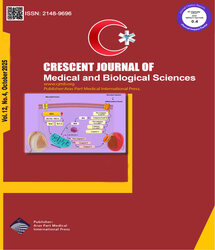

| Original Article | |
| Effect of Auditory Stimulation by Family Voices and Recitation of Prayers on Hemodynamic Changes in Comatose Patients: A Clinical Trial With Control Group | |
| Fatemeh Moghaddam1, Mitra Payami Bousarri2, Sograt Faghihzadeh3, Nasrin Masoumi4 | |
| 1Department of Critical Care Nursing, Faculty of Nursing and Midwifery, Zanjan University of Medical Sciences, Zanjan, Iran 2Zanjan Social Department of Health Research Center, Zanjan University of Medical Sciences, Zanjan, Iran 3Department of Nursing Education, Abhar Faculty of Nursing, Zanjan University of Medical Sciences, Zanjan, Iran 4Zanjan Social Department of Health Research Center, Zanjan University of Medical Sciences, Zanjan, Iran |
|
|
CJMB 2016; 3: 060-066 Viewed : 4416 times Downloaded : 4136 times. Keywords : Auditory stimulation, Coma, Hemodynamic status |
|
| Full Text(PDF) | Related Articles | |
| Abstract | |
Objective: Coma stimulation has been a method that is proposed to improve the results of the coma. In this way, planned and purposeful, the stimulation of a sensory system is multidimensional. The purpose of this study was to evaluate the effect of the auditory stimulation by family voices and recitation of prayers on hemodynamic changes of comatose patients. Materials and Methods: This study was a clinical trial. Fifty-one brain injury traumatized patients (including 18 patients in the familiar voice group, 18 patients in recitation of prayer group and 15 patients in the control group) were divided into experimental and control groups. The first group was tested for 14 days, twice a day and received family voices through headphones at noon and evening prayer time. The second group was tested under similar condition and received the Azan sound. Immediately hemodynamic changes before and after each intervention were recorded. The average duration of voice in the two groups was 4 minutes. The control group received no intervention and hemodynamic status was recorded twice a day at noon and evening prayer time. The data was analyzed by using SPSS and chi-square test, ANOVA and repeated measures. Results: The age range was 14 to 68 years. Azan group had the highest average age (41.2 ± 18.5 years). The highest initial consciousness level was in the control group (7.6 ± 3.5). Azan group before the intervention had the longest duration of coma (8 ± 4.7 days).The experimental group showed a significant correlation with the number of days and in some variables to the baseline, but did not show the uniformity trend in hemodynamics variables. Followed by post hoc test there was a significant increase in levels of hemodynamic parameters’ (systolic pressure, diastolic pressure, mean arterial pressure and breathing), especially after the Azan sound. Conclusion: Auditory stimulation by family voices and recitation of prayers or Azan sound cannot increase or decrease the uniform trend in hemodynamics variables in comatose patients. |
Cite By, Google Scholar
Google Scholar
PubMed
Online Submission System
 CJMB ENDNOTE ® Style
CJMB ENDNOTE ® Style
 Tutorials
Tutorials
 Publication Charge
Medical and Biological Research Center
About Journal
Publication Charge
Medical and Biological Research Center
About Journal
Aras Part Medical International Press Editor-in-Chief
Arash Khaki
Deputy Editor
Zafer Akan

















